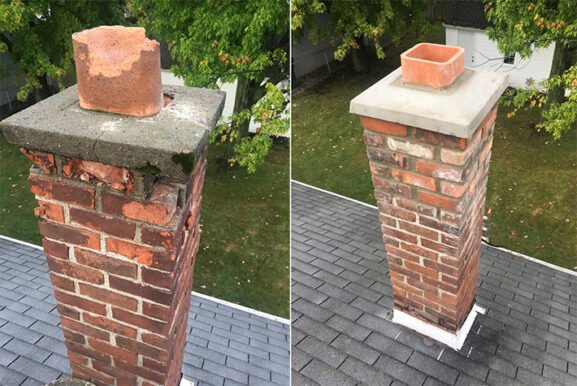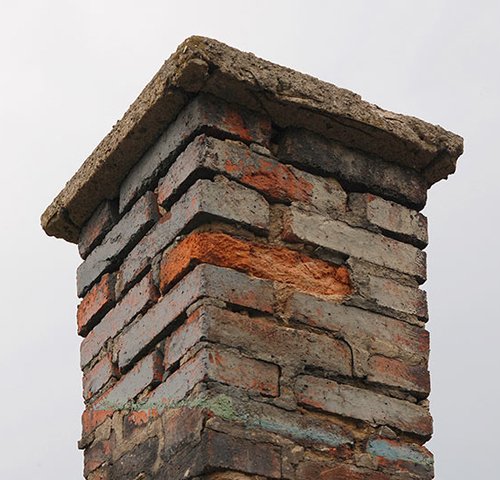Why Homeowners Should Never Ignore Chimney Crack Repair
Key Takeaways
- Cracks in chimneys can lead to structural damage, fire risks, and moisture problems if left unchecked
- Identifying early signs of chimney damage can prevent costly repairs and extend the life of your chimney
- Proper chimney inspections and timely repairs improve energy efficiency and indoor air quality
- Working with professionals ensures safe, code-compliant chimney restoration
Understanding the Hidden Risks Behind Chimney Cracks
Chimney cracks might look like minor cosmetic issues at first, but they can cause serious trouble over time. Whether your chimney is made of brick, stone, or concrete, any cracking can compromise its function and safety. When water seeps into these cracks, it expands and contracts with temperature changes. This freeze-thaw cycle accelerates the damage, weakening both the structure and the mortar joints.
In colder regions, the situation is even more critical. Water penetration during winter often leads to spalling—where the outer layers of masonry flake off. Eventually, this can lead to a partial or total chimney collapse. In addition to structural failure, cracks can allow toxic gases like carbon monoxide to escape into your home instead of being properly vented outside.
What Causes Chimney Cracks to Form
Several factors contribute to chimney cracking. Age is a big one. As materials degrade over decades, cracks naturally develop. But age isn’t the only culprit. Improper construction, foundation shifting, and settling can also put stress on the chimney stack. Weather is another enemy. Prolonged exposure to rain, snow, and extreme heat or cold gradually breaks down the materials.
Chimney fires, which burn much hotter than normal fireplace fires, can also create internal cracks that are difficult to spot without professional inspection. Earthquakes and other seismic activity may cause sudden or gradual cracking too, especially in older homes not built to modern codes.
How to Spot the Early Warning Signs
The best way to avoid serious chimney problems is to catch small cracks early. One of the first things homeowners should watch for is visible cracking on the exterior masonry. These can range from hairline fractures to deeper gaps along the mortar or bricks.
Other signs include:
- Bits of brick or mortar falling into the fireplace
- Discoloration on interior walls near the chimney
- Unexplained moisture or damp smells in the chimney area
- Rust on the firebox or damper
- Difficulty starting a fire or poor draft
If you notice any of these, it’s time to schedule an inspection.
The Importance of a Professional Chimney Inspection
Homeowners should never rely solely on visual inspection from the ground. Chimneys extend far above rooflines and have internal flues that aren’t visible without specialized tools. Certified chimney professionals use equipment like video scanners and infrared imaging to assess the chimney from top to bottom.
According to the Chimney Safety Institute of America (CSIA), annual inspections are the best way to detect issues before they lead to expensive repairs or hazardous conditions. These inspections help uncover damage hidden within flue liners or beneath chimney crowns—areas that are vital to proper operation and fire safety.
Common Repair Options for Chimney Cracks
Once cracks are discovered, the type of repair depends on the extent and location of the damage. Here are some of the most common solutions:
Tuckpointing
Tuckpointing involves removing damaged or crumbling mortar and replacing it with fresh mortar. This is often used when the joints between bricks are deteriorating but the bricks themselves are still in good shape. It restores structural stability and improves the chimney’s ability to shed water.
Brick or Stone Replacement
If the cracking affects the actual masonry units, damaged bricks or stones may need to be removed and replaced. Skilled masons will match the new pieces to the existing material, ensuring both structural integrity and aesthetic consistency.
Chimney Crown Repair
The chimney crown—the slab of concrete or mortar that covers the top of the chimney—is particularly vulnerable to cracking. If not sealed or repaired quickly, water can infiltrate and trickle down the flue. Small cracks can often be filled with a waterproof sealant, but larger issues might require complete crown reconstruction.
Flue Liner Repair
When cracks form in the flue liner, this can be particularly dangerous. The liner’s job is to contain heat and combustion gases, and a breach allows those gases to seep into living areas. Depending on the material (clay tile, stainless steel, or cast-in-place), liners can be patched, relined, or entirely replaced.
Why Timely Repairs Can Save You Thousands
Delaying chimney crack repairs can lead to costly outcomes. Small cracks allow moisture in, which speeds up deterioration and invites mold growth. As structural problems grow, so does the repair bill. A minor mortar repair might cost a few hundred dollars, but if the damage spreads to the flue liner or firebox, you could be looking at several thousand in repair costs—or worse, full chimney reconstruction.
There’s also the hidden cost of energy inefficiency. Cracks create pathways for warm air to escape in winter and hot air to enter in summer, making your HVAC system work harder and driving up energy bills.
Protecting Your Home Through Regular Maintenance
Being proactive is the smartest way to maintain chimney safety and efficiency. Schedule inspections every year, especially if your chimney is older or hasn’t been used in a while. If you use your fireplace regularly, this maintenance is even more essential.
Use a chimney cap to prevent rain, snow, and debris from entering. Consider applying a waterproofing treatment to the exterior masonry to repel moisture without sealing in internal vapor. Make sure any repairs are handled by certified professionals to ensure that the structure complies with safety standards and local building codes.
Final Thoughts on Maintaining a Safe and Sound Chimney
Taking care of chimney cracks isn’t just about preserving bricks and mortar—it’s about keeping your home safe, dry, and efficient. A well-maintained chimney protects against fire hazards, improves air quality, and enhances your home’s value. Regular attention and expert repair services go a long way in making sure your chimney stands strong for years to come.

